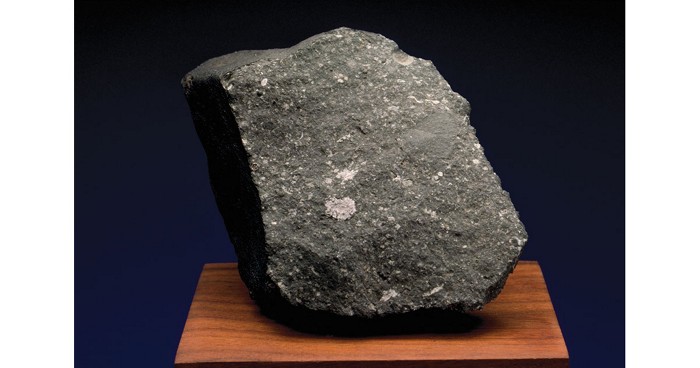Advertisement
Grab your lab coat. Let's get started
Welcome!
Welcome!
Create an account below to get 6 C&EN articles per month, receive newsletters and more - all free.
It seems this is your first time logging in online. Please enter the following information to continue.
As an ACS member you automatically get access to this site. All we need is few more details to create your reading experience.
Not you? Sign in with a different account.
Not you? Sign in with a different account.
ERROR 1
ERROR 1
ERROR 2
ERROR 2
ERROR 2
ERROR 2
ERROR 2
Password and Confirm password must match.
If you have an ACS member number, please enter it here so we can link this account to your membership. (optional)
ERROR 2
ACS values your privacy. By submitting your information, you are gaining access to C&EN and subscribing to our weekly newsletter. We use the information you provide to make your reading experience better, and we will never sell your data to third party members.
Geochemistry
Geologists reveal trends in mineral diversity
A new classification system that considers how minerals are formed could help scientists search for habitable worlds
by Ariana Remmel
July 15, 2022

By classifying minerals by how they were made, scientists could better study the complex chemistry on other worlds.
Geology reference texts define mineral species based on chemical composition and crystal structure. But mineral samples collected in the field often contain trace elements and structural defects that distinguish most specimens from a textbook example. “If you’re interested in comparing Earth with other planets, both within our solar system and beyond, then you really need to think beyond those very simple, idealized structures,” says Robert Hazen, a mineralogist and astrobiologist at the Carnegie Institution for Science. So Hazen and his colleagues devised a new way to categorize minerals using the imperfections that tell stories about each mineral’s geologic past.
Because minerals acquire defects as they form, the isotopic ratios and foreign inclusions trapped within their crystal lattices can help researchers understand the context in which they were made. After combing the literature, Hazen and his team identified approximately 60 processes, such as lightning and oxidation events, that contribute to the formation of the more than 5,000 minerals known on Earth. They found that about a quarter of Earth’s minerals could be made by multiple routes that used different processes (Am. Mineral. 2022, DOI: 10.2138/am-2022-8099 and 10.2138/am-2022-8105). For example, the study found that there have been at least 21 different recipes in Earth’s history for making pyrite, also known as fool’s gold.
The team showed that more than 81% of minerals on Earth require water to form and 34% form exclusively from biological processes. That’s good news for scientists trying to uncover the ancient history of planets that might have been habitable, Hazen says. Rocks and minerals can provide tangible evidence for life when you consider that a given mineral can form in multiple ways, including by biological processes, he says.
The findings show the profound impact that water and life have had on the diversity of minerals on Earth, says Linda Kah, a geologist at the University of Tennessee Knoxville. “This gives us a tool for seeing how widespread liquid water was in the universe,” she says.



Join the conversation
Contact the reporter
Submit a Letter to the Editor for publication
Engage with us on Twitter